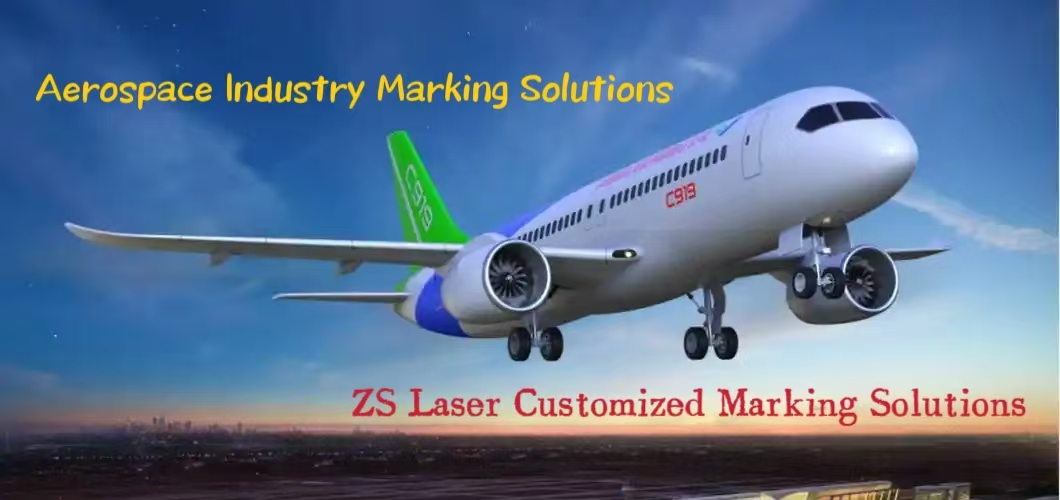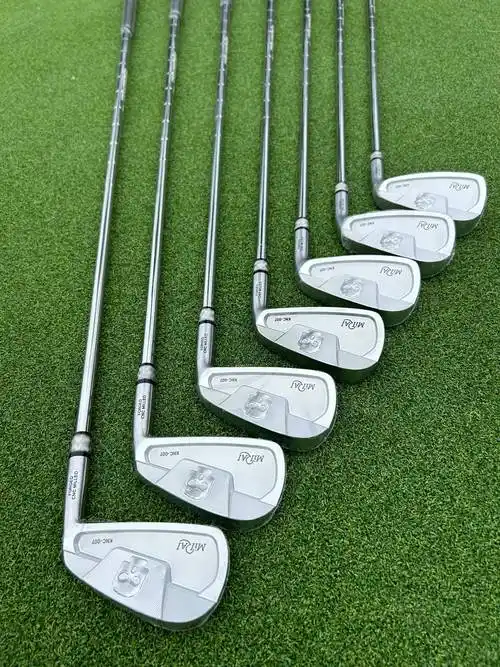The aerospace industry operates under some of the most stringent standards in modern manufacturing, where every component must be identified with markings that are durable, traceable, and tamper-proof. These markings are essential for ensuring safety, regulatory compliance, and lifecycle management of aircraft parts. Traditional marking methods often fall short in meeting these demanding requirements, especially in extreme operational environments.
Laser marking technology has emerged as a highly advanced solution to address these challenges. Offering unmatched precision, permanence, and adaptability to various materials, it enables manufacturers to meet the rigorous demands of Aerospace Industry Marking with confidence. Whether for serial numbers, barcodes, QR codes, or logos, laser marking ensures that each mark remains clear and readable throughout the component’s service life.
1.Why Marking is Critical in the Aerospace Industry
Marking plays a vital role in the aerospace sector, serving both operational and regulatory purposes.
Traceability:Every aerospace component must be uniquely identifiable throughout its entire lifecycle. Precise marking ensures that manufacturers, maintenance teams, and regulatory bodies can trace each part back to its origin, production batch, and service history, which is crucial for safety audits and incident investigations.
Strict Safety and Compliance Requirements:Regulatory agencies such as the FAA (Federal Aviation Administration) and EASA (European Union Aviation Safety Agency) impose stringent rules for part identification. Clear, permanent markings are required to verify that every component meets safety standards and is fit for service.
Anti-Counterfeiting and Quality Control:Markings serve as a powerful deterrent against counterfeit parts entering the supply chain. They also support rigorous quality control by linking each component to inspection and testing records.
Long-Term Durability:Aerospace components operate in extreme conditions, including high temperature fluctuations, intense pressure, and exposure to corrosive chemicals. Markings must remain legible and intact for decades to ensure proper identification and maintenance over the aircraft’s lifespan.
2.Laser Marking Technology Overview
Laser marking is a non-contact, high-precision process that uses a focused, high-energy laser beam to alter the surface of a material, creating permanent marks such as serial numbers, barcodes, logos, or QR codes. The process works by inducing localized heating, oxidation, or material removal, depending on the specific laser type and application requirements.
Fiber Laser – Known for its high efficiency and exceptional beam quality, fiber lasers are ideal for marking metals such as titanium alloys, stainless steel, and aluminum alloys. They produce deep, high-contrast marks with excellent durability.
UV Laser – Ultraviolet lasers operate with a short wavelength, enabling cold marking with minimal thermal impact. This makes them well-suited for marking delicate materials such as engineering plastics, composites, or coated surfaces without causing damage.
CO₂ Laser – CO₂ lasers are effective for marking non-metallic materials like plastics, composites, glass, and certain ceramics. They are widely used when clear, permanent marks are required on non-conductive surfaces.
Applicable Materials: Laser marking technology supports a wide range of aerospace-grade materials, including titanium alloys, stainless steel, aluminum alloys, and engineering plastics. This versatility makes it an ideal solution for the diverse material requirements found in the aerospace industry.
3.Applications of Laser Marking in Aerospace
Laser marking plays a vital role across multiple sectors of aerospace manufacturing, assembly, and maintenance. Its ability to deliver precise, permanent, and tamper-resistant marks ensures compliance with industry regulations while enabling full lifecycle traceability. Key applications include:
Aero Engine Component Identification:Critical parts such as turbine blades, casings, and shafts are laser-marked with serial numbers, batch codes, and manufacturing data to ensure traceability and quality assurance.
Fuselage and Structural Part Coding:Large structural elements, including wing assemblies, fuselage panels, and brackets, receive permanent alphanumeric or barcode markings for assembly control and inspection tracking.
Instrument Panels, Buttons, and Control Interfaces:Laser engraving is used to create durable, high-contrast labels and symbols on cockpit controls and dashboard components, maintaining legibility even under continuous use.
Avionics Circuit Boards and Electronic Components:PCB boards, connectors, and sensitive avionics modules are laser-marked for identification without compromising electronic performance.
Maintenance Records and QR Code Tracking Systems:Laser-marked QR codes on parts and tools enable real-time digital tracking of service history, inspections, and replacement cycles, improving maintenance efficiency and safety compliance.
4.Advantages of Laser Marking for the Aerospace Industry
Laser marking offers a range of benefits that make it uniquely suited to the stringent requirements of the aerospace sector:
Non-Contact Processing:The laser beam interacts with the material surface without direct physical contact, eliminating tool wear and preventing mechanical stress or deformation of delicate aerospace components.
Permanent, Durable Marks:Laser markings are resistant to corrosion, extreme temperatures, and mechanical abrasion, ensuring long-term readability even in harsh aerospace environments.
High Resolution and Micron-Level Precision:Capable of producing ultra-fine details, laser marking enables clear, high-density characters and graphics for small or complex aerospace parts.
Design Flexibility:Supports the creation of intricate designs, 2D DataMatrix codes, barcodes, logos, and alphanumeric text, meeting diverse identification needs.
Consumable-Free and Environmentally Friendly:Laser marking requires no inks, chemicals, or labels, reducing operational costs and environmental impact while improving production efficiency.
5.Choosing the Right Laser Marking System for Aerospace
Selecting an appropriate laser marking system is crucial to ensure compliance, durability, and efficiency in aerospace manufacturing. Key factors to consider include:
Laser Type and Power Selection:Match the laser source (Fiber, UV, or CO₂) and output power to the specific application, ensuring optimal performance for the required marking speed and precision.
Material Compatibility and Marking Depth:Different aerospace materials, such as titanium alloys, stainless steel, aluminum alloys, and engineering plastics, require tailored laser parameters to achieve the desired marking depth and contrast without compromising structural integrity.
Software Compatibility and Automation Integration:Ensure the marking software supports aerospace-specific coding formats and can integrate seamlessly with automation systems for high-volume, consistent production.
Operational Stability for Continuous Production:A reliable system should maintain accuracy and consistency under extended production runs, minimizing downtime and rework.
After-Sales and Technical Support:Strong technical support and readily available spare parts are critical to sustaining long-term operational efficiency in demanding aerospace environments.
By carefully evaluating these factors, aerospace manufacturers can select a laser marking system that delivers precision, reliability, and full compliance with industry standards.
6.Conclusion & Call to Action
Laser marking has become an indispensable technology in the aerospace industry, delivering unparalleled improvements in safety, reliability, and efficiency. By enabling precise, permanent, and high-contrast markings on critical components, it supports full traceability, compliance with stringent aerospace standards, and streamlined maintenance throughout an aircraft’s lifecycle.
In modern aerospace manufacturing, laser marking is not just a tool—it is a strategic necessity that ensures every part meets the highest performance and regulatory requirements. Its non-contact process, exceptional durability, and compatibility with a wide range of materials make it an irreplaceable solution for today’s aviation challenges.
Contact us today to learn how our aerospace laser marking solutions can help you achieve precision, compliance, and reliability in every component you produce.
Email:zslaser1@gmail.com
Whats App:+86 15231679816
Phone:+86 15231679816
Instagram:zslaser1
 ZS Laser Equipment
ZS Laser Equipment










WhatsApp
Scan the QR Code to start a WhatsApp chat with us.